Anthropogenic Activities and the Degradation of the Environmental Quality in Poor Neighborhoods of Abidjan, Côte d’Ivoire: Abia Koumassi Village ()
1. Introduction
Abidjan where the village of Abia Koumassi is located is currently experiencing a population growth, rapid Industrialization and urbanization and unplanned growth. This change causes so many problems that the authorities must solve. Among these problems, we can mention the pollution of water resources. Many industrial and domestic activities are probably a real danger to the urban environment.
In this locality, the various districts do not have adequate provisions because all the sewage and sanitation system of Abidjan is insufficient, with many gaps. According to [1], the rate of household connections to the sewerage system is limited to 29%. The uncollected wastes (45%) are found directly in the nature involving the risk of deterioration of groundwater quality. The groundwater in the city of Abidjan is subject to various pollution problems. Studies by [2-4] showed significant levels of nitrate, fecal coliform and lead in the groundwater from Abidjan. The study of [5] about water and sediments of the Ebrié lagoon showed also high levels of Metallic Trace Elements in the sediments of the same lagoon. According to these authors, this lagoon is subject to anthropogenic pollution due to the discharge of domestic and industrial sewage untreated or inadequately treated. Metallic Trace Elements are factors of important pollution in aquatic ecosystems [6] because of their toxicity and ability to accumulate in biota. According to these authors, one of the important properties of Metallic Trace Elements results from production activities and human consumption. These elements are not biodegradable.
The development of industrial activities notably the sector of oil field in Côte d’Ivoire in the south of Abidjan is not without risk for groundwater pollution. The Groundwater from this area is supplied by direct infiltration of rainwater. The stormwater infiltration is favored by a high coefficient of infiltration and a low level of water from the Quaternary [7]. However, a large part of the population, especially in the south of Abidjan in general and in the village of Abia Koumassi in particular uses water of the shallow aquifer for domestic needs. In all the world, water pollution is one of the most crucial problems which every country must solved. To date, many researchers have conducted extensive surveys of water resources contamination [8-10]. The results demonstrated that the pollution of water results from anthropogenic activities of different regions. This study aims to assess environmental risks linked to human activities on the quality of the water in the village of Abia Koumassi.
2. Material and Methods
2.1. Study Area
Abidjan is located in the south of Côte d’Ivoire, between latitudes 5˚00' and 5˚30' North and longitudes 3˚50' and 4˚10' West. It consists of ten municipalities, including that of Koumasi where the village of Abia Koumasi is located (Figure 1). Abia Koumasi is located in the south of the town of Port-Bouet and has about 4000 inhabitants. People who live in this village are mostly indigenous Ebrié, the Ivorian immigrants from other regions of Côte d’Ivoire. In addition to these populations, there are alien from the Economic Community of West African States and other countries bordering Côte d’Ivoire. The geology of the village of Abia Koumassi is the same with the
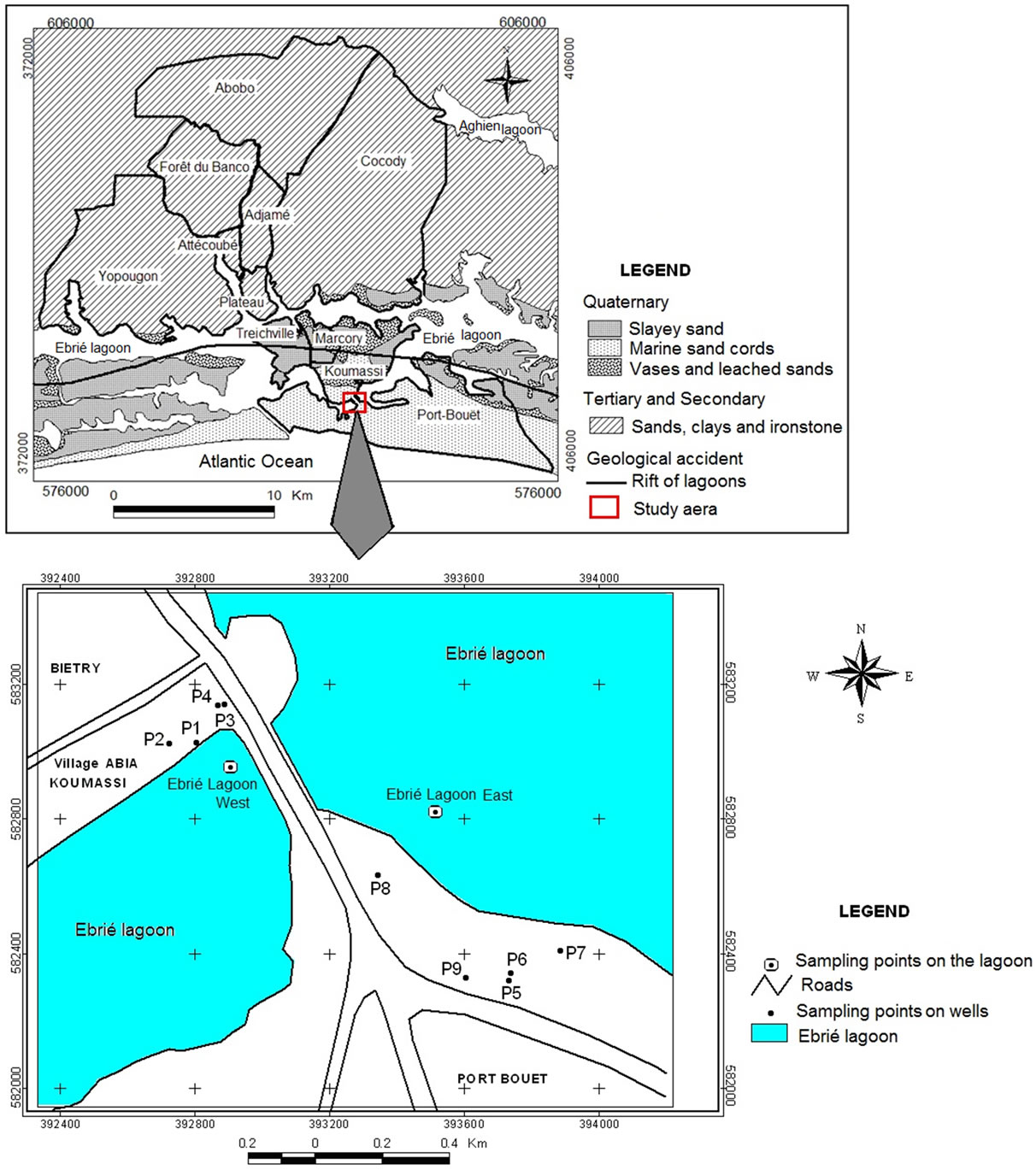
Figure 1. Presentation of the study area and the location of sampling points of water.
Southern District of Abidjan, located on the coastal sedimentary basin of Côte d’Ivoire. The bedrock geological of the District of Abidjan consists of two main types of rocks: Precambrian basement and coastal sedimentary basin. In the Abidjan area, outcrops of Precambrian are rare. It is only found in Anyama and North-East Attiékoi.
The Continental Terminal, formation of Mio-Pliocene age is characterized by a lenticular stratification, coarse sands, clays of variegated ferruginous sandstone and iron ore. On the paleogeograhic, from the Cretaceous to the Quaternary three episodes of transgression are well known: Albo-Aptian: clays and sandstones of the Lower Cretaceous, Maastrichtian-Eocene: glauconitic clays, sands and clays and lower Miocene: black marl relics sharks, colorful clays and lignites. During periods of transgression, marine sediments are clays, marl, sandstone, sand and limestone shells, or lumachelliques. It is also found in these formations Foraminifera, Ammonite and Nautilus features, notably on the beaches of Fresco. However, these episodes of marine sedimentation interspersed with continental phases related to a decline in the sea. From the structural point of view, the ivorian sedimentary basin is crossed by a large fault called the East-West fault lagoons south dipping, with a rejection reaching 5000 m.
In the area, the Quaternary aquifer contains the most vulnerable water in Abidjan. The Quaternary aquifer has from top to bottom four (4) horizons. Formations 1 and 2 are generally marly clay and waterproof. It contains also two types of groundwater. The Oogolien groundwater grows mainly in fine to coarse sand of layer 3, while that of Nouakchottian lays in coarse marine sands layer 4. The piezometric level of groundwater in the aquifer is shallow and varies from 0 to 1 m. The greatest fluctuation is about 1 m depending on the season, indicating a sizable infiltration rate of rainwater into the soil. Quarternary sources are quite numerous along the borders of the Ebrié lagoon, which highlights the conditions of evacuation of part of the excess water provided by precipitation.
2.2. Piezometric Study Method
The aim of the hydrogeological study was to measure the piezometric level of groundwater of the Quaternary aquifer in the month of June 2010, which corresponds to the rainy season in the large city of Abidjan. The piezometric campaign helped in the inventory of all water points in the area. The measurements were made on 9 hand dug wells. Fieldwork required the use of a Garmin GPS Map 60 CSX for the identification of geographical coordinates in UTM different wells taken as piezometers. This study was performed using a probe piezometric OTT light and sound (100 m) to measure the water depth and a digital camera Sony for taking pictures.
2.3. Water Sampling Method
A hydrochemical and microbiological sampling of the water resources of the village Abia Koumassi was conducted in june 2010. This period of water sampling in Abidjan was the rainy season. The samples were focused on well water and water from the Ebrié lagoon. During this campaign, the water samples for chemical analysis were collected in polyethylene bottles of 1 liter capacity, previously washed with nitric acid and then with distilled water. On the field, before filling the bottles, they were washed three times with water to collect.
Bottle filling was done to the brim and the screw cap to prevent gas exchange with the atmosphere. Water samples were then transported in a cooler at 4˚C for laboratory for analysis in the hour of sampling. During sampling, the physical parameters of water (the Ebrié lagoon and groundwater) such as temperature (T), pH and electrical conductivity (EC), salinity, dissolved oxygen (O2) and the redox potential (Eh) were measured. In total, we have collected for chemical analysis 10 samples with 8 hand dug wells and 2 Ebrié lagoon. On the water samples, two types of analysis were performed. It is the analysis of major ions and metallic trace elements. For major ions, elements analyzed are Ca2+, Mg2+, Na+, K+,  , Fe2+ for cations and
, Fe2+ for cations and ,
,  ,
,  for anions. Metals such as Mn, Ni, Zn, Cd, Cu, Pb, Cr and Co were determined in water. The Metallic Trace Elements were analyzed using an atomic absorption spectrophotometer (AAS). Samples for bacteriological analysis were collected in 500 ml bottles previously sterilized and kept free from contamination in a cooler at 4˚C. In these samples, bacteriological analysis has concerned bacteria such as Escherichia coli, faecal streptococci, coliforms and Clustridium perfringens thermo tolerant. A total of 10 water samples were also collected for this analysis, eight (8) wells and two (2) of the Ebrié lagoon. Field equipment used for this study consists of 4 Star pH meter to measure the pH and Eh, Hach conductivity SENSION 5 for measuring physical parameters of the water. In this study, all wells that have been sampled are used for domestic activities of populations.
for anions. Metals such as Mn, Ni, Zn, Cd, Cu, Pb, Cr and Co were determined in water. The Metallic Trace Elements were analyzed using an atomic absorption spectrophotometer (AAS). Samples for bacteriological analysis were collected in 500 ml bottles previously sterilized and kept free from contamination in a cooler at 4˚C. In these samples, bacteriological analysis has concerned bacteria such as Escherichia coli, faecal streptococci, coliforms and Clustridium perfringens thermo tolerant. A total of 10 water samples were also collected for this analysis, eight (8) wells and two (2) of the Ebrié lagoon. Field equipment used for this study consists of 4 Star pH meter to measure the pH and Eh, Hach conductivity SENSION 5 for measuring physical parameters of the water. In this study, all wells that have been sampled are used for domestic activities of populations.
2.4. Methods of Data Processing
The data collected in this study were treated from three hydrogeochemical approaches. The piezometric data were collected to know the range of the groundwater level in the area. That helps us to follow the influence of anthropogenic activities in the study area. Piezometric data are also used to determine groundwater flowing main direction.
On the other hand, the data processing involved a combination of statistical methods mutlivariate and hydrochemical method. The hydrochemical approach required the use of the triangular diagram of Piper for the classification of the water studied. This method allows a group of water points in key classes that form hydrofacies. The statistical method used is the cluster analysis. It allows the study of phenomena at the origin of the mineralizetion of the water. Cluster analysis is a powerful tool to analyze data for water chemistry and formulation of geochemical models [11]. This classification system that uses the Euclidean distance for similarity measures and the method of guardianship link that produces the most distinctive classification where each member in a group is more similar to his colleagues that any member outside the group is used in hydrogeology by authors such as [12-14]. This analysis includes 10 descriptors and 18 variables are: salinity (Sal.), electrical conductivity (EC), pH and ions such as Fe2+, Ca2+, Mg2+, Na+, K+,  ,
,  ,
,  and the metallic trace elements Mn, Ni, Zn, Cd, Cu, Pb, Cr and Co. It was conducted using the STATISTICA 6.0 software. Those methods used in this study allowed to know the mechanism of mineralization of water in the village of Abia Koumassi and their relationship with human activities.
and the metallic trace elements Mn, Ni, Zn, Cd, Cu, Pb, Cr and Co. It was conducted using the STATISTICA 6.0 software. Those methods used in this study allowed to know the mechanism of mineralization of water in the village of Abia Koumassi and their relationship with human activities.
3. Results
3.1. Study of Flow Directions of Groundwater
The piezometric measurements carried out in the village of Abia Koumassi are shown in Table 1. In the area, groundwater is shallow. The piezometric level of the groundwater measured varies from 0.13 m to 0.79 m, with an average of 0.55 m. Piezometric study shows that groundwater flow from north to south. Thus the main direction of groundwater flowing during the pollution is from the village of Abia Koumassi to the sea downstream.
3.2. Hydrochemical Study
The results of measurements of physical parameters of groundwater and lagoon water measured are listed in Table 2. The temperature of Ebrié lagoon varies from 29˚C to 29.3˚C, with an average of 29.15˚C ± 0.15˚C. Groundwater temperature ranging between 27.7˚C and 29.8˚C, with an average of 28.73˚C ± 0.26˚C. The pH of Ebrié lagoon water varies from 7.26 to 7.43, with an average of 7.35 ± 0.08. Groundwater sampled from hand dug wells has a pH ranging between 6.8 and 7.62, with an average of 7.15 ± 0.09. That indicates that water of the village has low acidity.
The redox potential of the water varies from −5.06 to −4.08 mV, with an average of −4.57 ± 0.49 mV for water from Ebrié lagoon. For the groundwater, the Eh varies from −22.60 mV to −72.70 mV, with an average of −42.72 ± 5.38 mV. The values of redox potential show that water of the village is in reducer environment. This

Table 1. Piezometric data collected in the field.

Table 2. Summary of in situ measurements of the physical parameters of water.
is also reflected by the low dissolved oxygen values observed in water. Dissolved oxygen values of the Ebrié lagoon range between 4.25 mg∙L−1 and 4.57 mg∙L−1, with an average of 4.41 ± 0.16 mg∙L−1. The Groundwater has dissolved oxygen values which vary from 1.72 to 4.11 mg∙L−1, with a mean of 3.21 ± 0.35 mg∙L−1.
The Water from the village is highly mineralized, with an electrical conductivity average 7325 ± 99.50 µS/cm for the water of the Ebrié lagoon and 907.75 ± 10.26 µS/cm for the groundwater. The average salinity is 4.00‰ ± 0.28‰ for water from Ebrié lagoon and 0.40‰ ± 0.04‰ for groundwater. Total dissolved solids are in average 333.50 ± 49.50 mg∙L−1 for water from the lagoon and 497.83 ± 62.90 mg∙L−1 for hand dug wells water.
The results of chemical analysis carried out on groundwater and the lagoon water from Abia village Koumassi are recorded in Table 3. The Water sampling contains high concentrations of Fe2+. The values vary from 0.07 mg∙L−1 to 12.8 mg∙L−1, with an average of 17.08 ± 15.86 mg∙L−1 for the groundwater. These high concentrations (12.8 mg∙L−1) occur at the water from a well located in a former iron scrap. In addition, the groundwater contains high levels of nitrate, which vary between 0.19 mg∙L−1 and 116.81 mg∙L−1, with a mean of 32.86 ± 15.66 mg∙L−1. These high nitrate levels are a greater danger to the health plan for the population using well water for their domestic needs.
The analysis results of metallic trace elements contained in the water samples are shown in Table 3. Analysis shows that manganese is virtually absent in the water. Groundwater and lagoon water contain also Ni (0.072 mg∙L−1 and 0.085 mg∙L−1 for water lagoon), Zn (0.077 mg∙L−1 for well water), Pb (0.004 mg∙L−1 for well water), Cr (0.649 mg∙L−1 for lagoon water and 0.613 mg∙L−1 for well water), Co (0.115 mg∙L−1 for lagoon water and 0.361 mg∙L−1 for well water).
3.3. Hydrochemical Classification of Water
Water Classification from Piper diagram identifies two types of water in the area (Figure 2). In the area, the most important anion in water is the sulphates and the greatest cation is calcium.
3.4. Multivariate Statistical Study: Cluster Analysis
The analysis from the Ascending Hierarchical Classification gave the graph below. The dendrogram (Figure 3) highlights two main groupes of variables. The first consists of Mg2+, Fe2+, K+,  ,
,  , pH, EC,
, pH, EC,  , Ca2+ and Na+. This group consists of major ions whose dissolution is governed by the contact of water with the substratum. This shows the intervention of the geology in the mineralization of water in the village of Abia Koumassi. However, the presence of nitrate in this group highlights the influence of nitrogen mineralization after domestic activities in water. The second group consists of trace metal elements (Co, Cu, Cd, Ni, Mn, Zn, Cd and Pb) which dissolved in water is related to urban anthropogenic activities. This highlights the influence of human activities in the mineralization of water resources in the study area, therefore the degradation of the physico-chemical quality of water from the village of Abia Koumassi. The classification of water points according to their similarity to part of a follow-up is given in Figure 4. This dendrogram shows three clusters of water points. The first group contains the water of the Ebrié lagoon (Lag. E and Lag. W). The second are wells P1, P2, P3, P4, P5, P7 and P8 and the third only represented by the well P6. In the context of monitoring water quality, it is important to choose a track point in each cluster, three monitoring points are needed.
, Ca2+ and Na+. This group consists of major ions whose dissolution is governed by the contact of water with the substratum. This shows the intervention of the geology in the mineralization of water in the village of Abia Koumassi. However, the presence of nitrate in this group highlights the influence of nitrogen mineralization after domestic activities in water. The second group consists of trace metal elements (Co, Cu, Cd, Ni, Mn, Zn, Cd and Pb) which dissolved in water is related to urban anthropogenic activities. This highlights the influence of human activities in the mineralization of water resources in the study area, therefore the degradation of the physico-chemical quality of water from the village of Abia Koumassi. The classification of water points according to their similarity to part of a follow-up is given in Figure 4. This dendrogram shows three clusters of water points. The first group contains the water of the Ebrié lagoon (Lag. E and Lag. W). The second are wells P1, P2, P3, P4, P5, P7 and P8 and the third only represented by the well P6. In the context of monitoring water quality, it is important to choose a track point in each cluster, three monitoring points are needed.
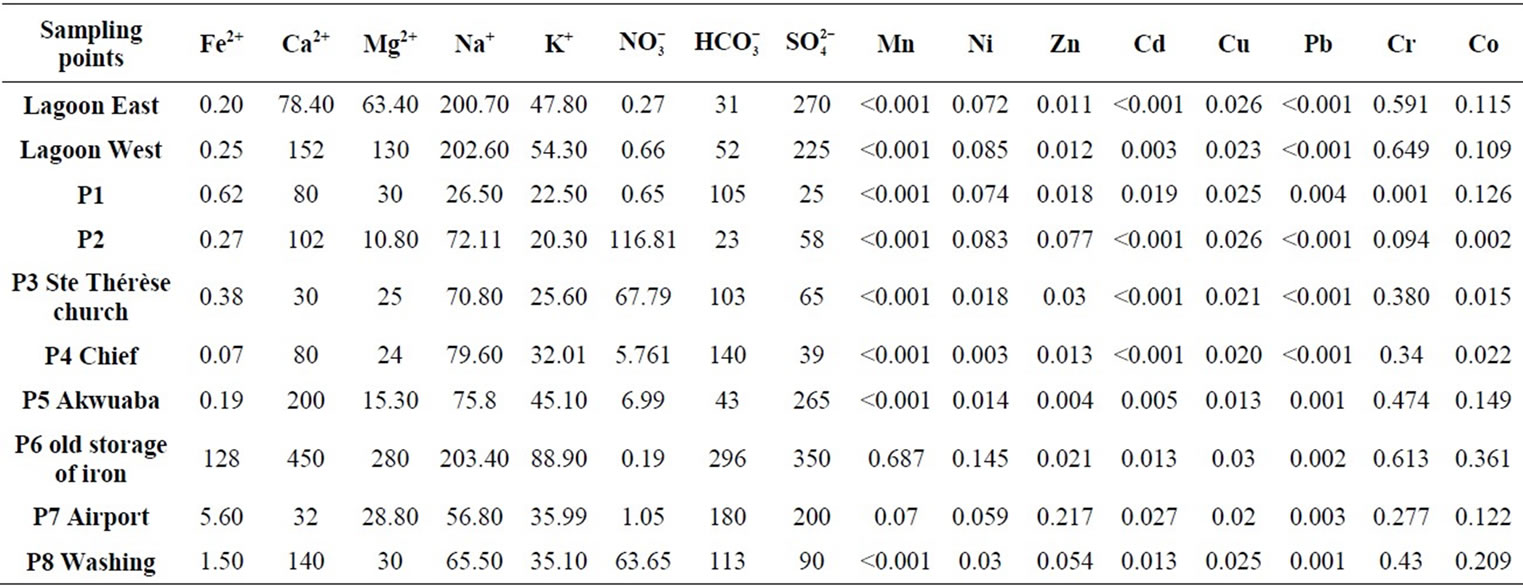
Table 3. Results of chemical analysis of water from Abia Koumassi expressed in mg∙L−1.
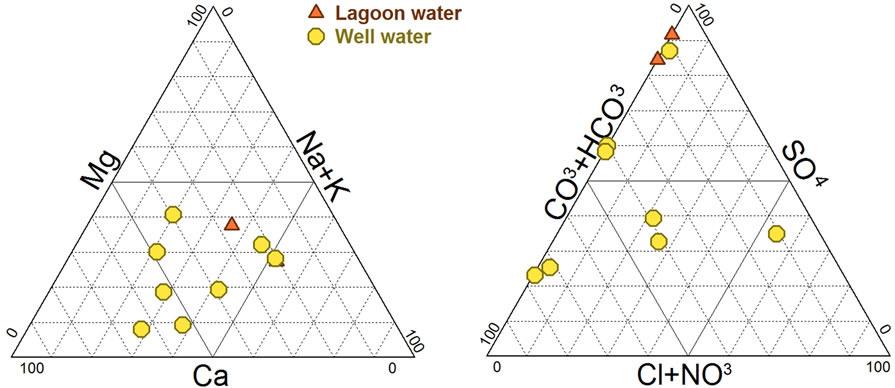
Figure 2. Classification of ions from water of Abia Koumassi village.
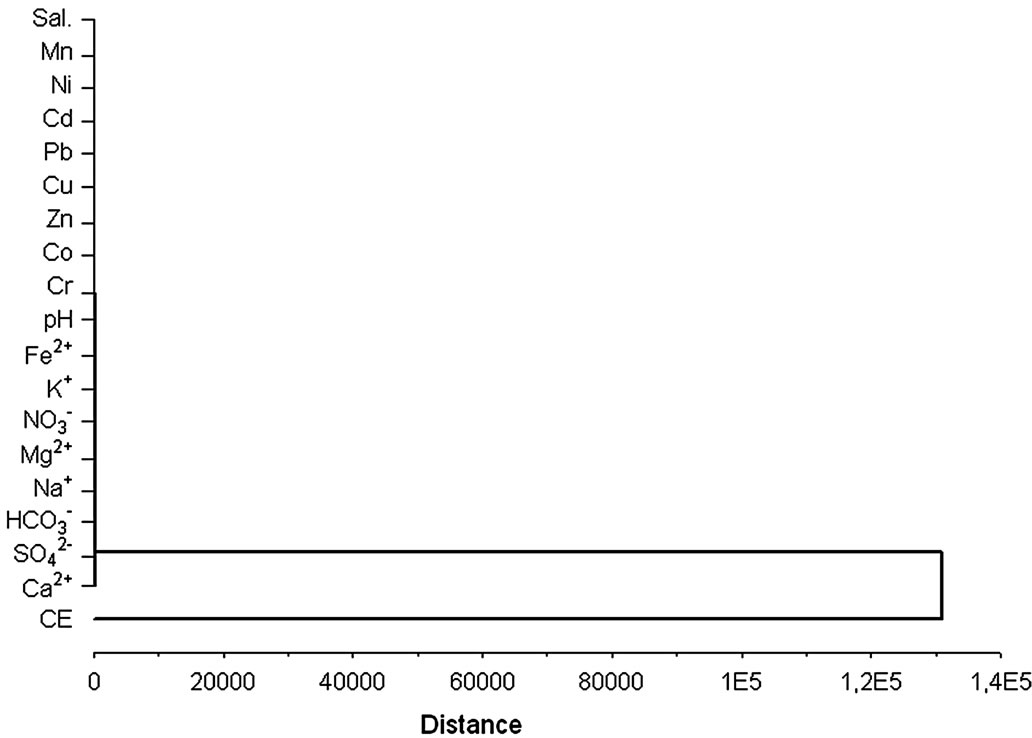
Figure 3. Cluster analysis of physico-chemical parameters of water from Abia Koumassi.
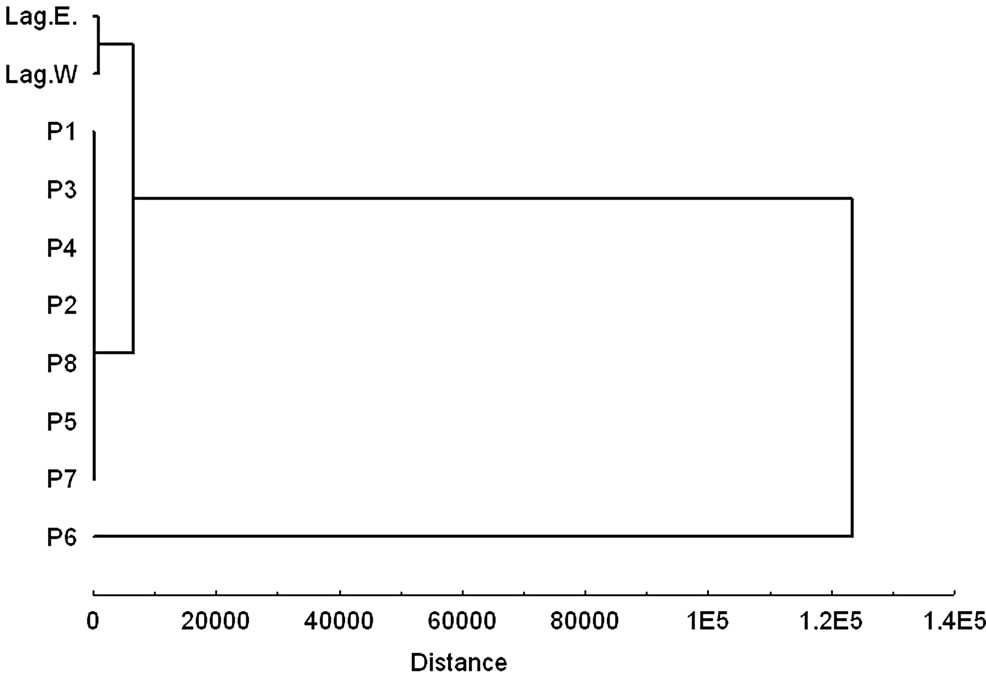
Figure 4. Cluster analysis of water points in the village of Abia Koumassi.
3.5. Study Microbiological Water
The microbiological results of water analysis from Abia Koumassi show the presence of fecal coliforms mainly Escherichia coli in the water studied. This is particularly the water of the Ebrié lagoon and hand dug wells P3, P4, P5 and P8. The analysis indicates high rate of faecal streptococci in groundwater. These include wells P1 and P5 respectively (1000 and 330 faecal streptococci per 100 ml of water). The water level of the lagoon is about 240 and 210 faecal streptococci per 100 ml of water. Thermo-tolerant coliforms are the most important in the area, with quantities of 35,000 and 110,000 for lagoon water. For well water, we have more than 5000 - 29,000 thermo tolerant coliform per 100 ml of water in wells P3, P4 and P5.
Clustridium perfringens occur in the water from the Ebrié lagoon the west side (120 Clustridium Perfringens/ 20ml water). In well water, they are present in wells P1 and P2, respectively 120 and 60 Clustridium Perfringens/ 20ml water. Different bacteria in the water of the village of Abia Kumasi show recent water microbiological pollution of human origin, therefore the influence of water by human activities in the study area.
4. Discussion
The Water studied in the village of Abia Koumassi, consist of surface water (water of the Ebrié lagoon) and groundwater (hand dug well water). The physical parameters of water measurement on the field show that the pH is near the neutrality and ranges between 6.8 and 7.43. The Water has a temperature that varies from 28.3˚C to 29.8˚C. These values fall within the range of values observed temperatures in the water of coastal sedimentary basin by Ivorian [2,14,15]. These temperatures correspond to seasonal ambient air temperatures. This indicates the opening of the aquifer system, and therefore its vulnerability in front of pollution [16]. The electrical conductivities measured from water are very high, with mean values of 7325 ± 99.50 µS/cm for lagoon water and 907.75 ± 10.26 µS/cm for groundwater. These greatest values show the influence of human activities on the physical quality of water in the village. Indeed, Quarternary aquifers are generally shallow groundwater outcropping in places and therefore exposed to pollution from domestic and industrial activities [7].
The multivariate analysis showed the influence of anthropogenic pollution (industrial, domestic and artisanal pollution) of water resources of village Abia Koumassi. The presence of nitrate in hand dug wells water (116.81 mg∙L−1), at levels higher than the [17] standard for drinking water (50 mg∙L−1) show that the water is unfit for human consumption. Indeed, studies by [13-15] on groundwater in the city of Abidjan revealed significant levels of nitrate in the water. In fact, this shanty town of Abidjan does not have an adequate sanitation system for the disposal of domestic wastewater.
They, are found in the nature before seeping into the ground and then into groundwater. Surface water is influenced by domestic, industrial and artisanal activities happening in the city. Nitrogen compounds found in water come mainly from the degradation of organic matter by microorganisms in the topsoil. According to [18] in the soil, organic matter is mineralized from the biological oxidation of  to
to . Changes produced in the surface are caused by leaching, with infiltration of rainwater in depth. The high nitrate levels are also associated with high levels of metalllic trace elements (MTE) in water of the village. According to the statistical studies the high levels of MTE including Co, Cr, Fe, and Cu come from anthropogenic activities related to domestic, Industrial and artisanal activities. Studies of [14] showed excessive lead in well water areas of Koumassi, Marcory and Port-Bouet. These neighborhoods are old and highly urbanized. There is found industrial parks, gas stations and various craft activities that could be the source of this metal pollution of groundwater. To this is added the contribution of runoff from urban storms and leaching of metals from garbage and soluble residues. According to [19], rainwater is universally recognized as being the vector of large amounts of pollution in their path leaching metals (Pb, Ni, Cr, Zn and Cd), salts, hydrocarbons fertilizers, pesticides and other waste or littering roads and parking or suspended in the air. The rainwater seeps into the ground to reach the shallow aquifers later. The shallowness of the water and sewerage failure of the city of Abidjan is the factors that promote the infiltration of these pollutants into the groundwater of the Quaternary. In the city of Abidjan, the development of human activities causes significant releases of domestic and industrial effluents, which is the main source of production of MTE in the environment and in the water of the city (surface water and groundwater). Moreover, [5] have also found high levels of MTE in sediment of the Ebrié lagoon in Abidjan. Today, the metal pollution of water is a real environmental problem in Africa. The studies of [20] also highlighted high levels of MTE in sediments of Lake Fouarat Morocco. For water, the observed metal pollution in the environment is rooted in human activities namely, discharges of garbage, leaching and agricultural discharges associated with industrial activities. In Nigeria, significant levels were observed by MTE and [21] in water of the main river of the state of Ondo. In Morocco, these high levels were also observed by [22] in the irrigation water of a rice field in Gharb.
. Changes produced in the surface are caused by leaching, with infiltration of rainwater in depth. The high nitrate levels are also associated with high levels of metalllic trace elements (MTE) in water of the village. According to the statistical studies the high levels of MTE including Co, Cr, Fe, and Cu come from anthropogenic activities related to domestic, Industrial and artisanal activities. Studies of [14] showed excessive lead in well water areas of Koumassi, Marcory and Port-Bouet. These neighborhoods are old and highly urbanized. There is found industrial parks, gas stations and various craft activities that could be the source of this metal pollution of groundwater. To this is added the contribution of runoff from urban storms and leaching of metals from garbage and soluble residues. According to [19], rainwater is universally recognized as being the vector of large amounts of pollution in their path leaching metals (Pb, Ni, Cr, Zn and Cd), salts, hydrocarbons fertilizers, pesticides and other waste or littering roads and parking or suspended in the air. The rainwater seeps into the ground to reach the shallow aquifers later. The shallowness of the water and sewerage failure of the city of Abidjan is the factors that promote the infiltration of these pollutants into the groundwater of the Quaternary. In the city of Abidjan, the development of human activities causes significant releases of domestic and industrial effluents, which is the main source of production of MTE in the environment and in the water of the city (surface water and groundwater). Moreover, [5] have also found high levels of MTE in sediment of the Ebrié lagoon in Abidjan. Today, the metal pollution of water is a real environmental problem in Africa. The studies of [20] also highlighted high levels of MTE in sediments of Lake Fouarat Morocco. For water, the observed metal pollution in the environment is rooted in human activities namely, discharges of garbage, leaching and agricultural discharges associated with industrial activities. In Nigeria, significant levels were observed by MTE and [21] in water of the main river of the state of Ondo. In Morocco, these high levels were also observed by [22] in the irrigation water of a rice field in Gharb.
[20] add to these sources of metal pollution mechanical garages, workshops, surface treatment by painting vehicles, stations, distribution of petroleum products, and textile industries pollution. According to [23], human activities are causing pollution of groundwater Mzamza community in Morocco. In the plain of El Ma El Abiod Algeria, [24] showed that groundwater is also threatened by many homes anthropogenic pollution such as urbanization, industry, livestock and dumps. Water from Abia Koumassi contains high levels of fecal coliform bacteria (Escherichia coli), fecal streptocopes Clustridium perfringens.
The presence of these bacteria in the water shows that the village is facing a recent bacteriological pollution of human origin. [23,25] explain the presence of fecal coliforms and fecal streptococci in wells water by fecal contamination and therefore the possibility that dangerous pathogens are present in the water. Streptococci and fecal coliforms are indicators of fecal pollution and are largely of human origin. The studies of [15,26] showed fecal pollution of human origin and influence of human activities on the deterioration of the quality of water resources in the city.
5. Conclusions
The study on water resources in the village of Abia Koumassi helped highlight the main characteristics of water. In the village, the principal direction of groundwater flow is north-south. This direction could be considered as the direction of the spread of pollutants in the area. The water has a temperature of between 27.7˚C and 29.8˚C, which corresponds to seasonal variations in ambient temperature. The pH is near neutrality and ranges between 6.98 and 7.62.
The Water resources of the village Abia Koumassi are highly mineralized. The electrical conductivity measured in the water ranges from 585 µS/cm and 1310 µS/cm. In the water from the village Ca2+ and  are the most important ions. The nitrate level in the water (116.81 mg∙L−1) is higher than WHO standard for drinking water and has been found in well water in the village. Most of the studied water contains metallic trace elements (MTE) including Ni, Zn, Co, Cr, Pb, Fe, Cu and Cd. The metallic trace elements present in groundwater are of anthropogenic origin. They are mainly from industrial, crafts, urban and domestic discharges. Microbiological analysis showed that the water contains significant levels of fecal coliform type Escherichia coli, faecal streptococci, Clustridium perfringens and thermo tolerant coliform. The presence of these microorganisms in the water shows that the water resources of the village are facing a recent faecal pollution of human origin. This study shows that water from Abia Koumassi is confronted with pollution from domestic, industrial and artisanal activities. The water contains recent microbiological pollution. Thus the quality of water resources in Abia Koumassi is controlled by anthropogenic activities in the area.
are the most important ions. The nitrate level in the water (116.81 mg∙L−1) is higher than WHO standard for drinking water and has been found in well water in the village. Most of the studied water contains metallic trace elements (MTE) including Ni, Zn, Co, Cr, Pb, Fe, Cu and Cd. The metallic trace elements present in groundwater are of anthropogenic origin. They are mainly from industrial, crafts, urban and domestic discharges. Microbiological analysis showed that the water contains significant levels of fecal coliform type Escherichia coli, faecal streptococci, Clustridium perfringens and thermo tolerant coliform. The presence of these microorganisms in the water shows that the water resources of the village are facing a recent faecal pollution of human origin. This study shows that water from Abia Koumassi is confronted with pollution from domestic, industrial and artisanal activities. The water contains recent microbiological pollution. Thus the quality of water resources in Abia Koumassi is controlled by anthropogenic activities in the area.